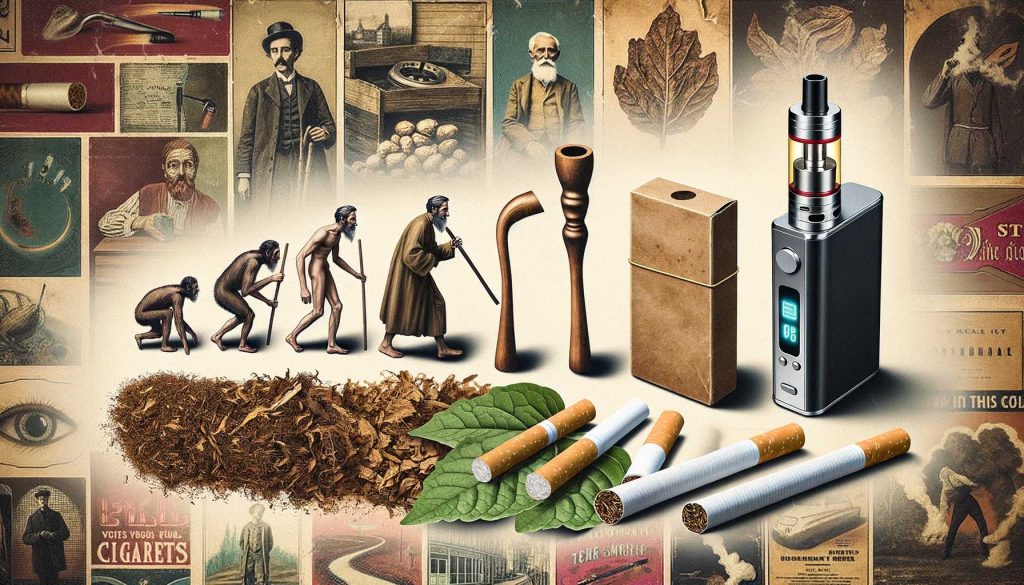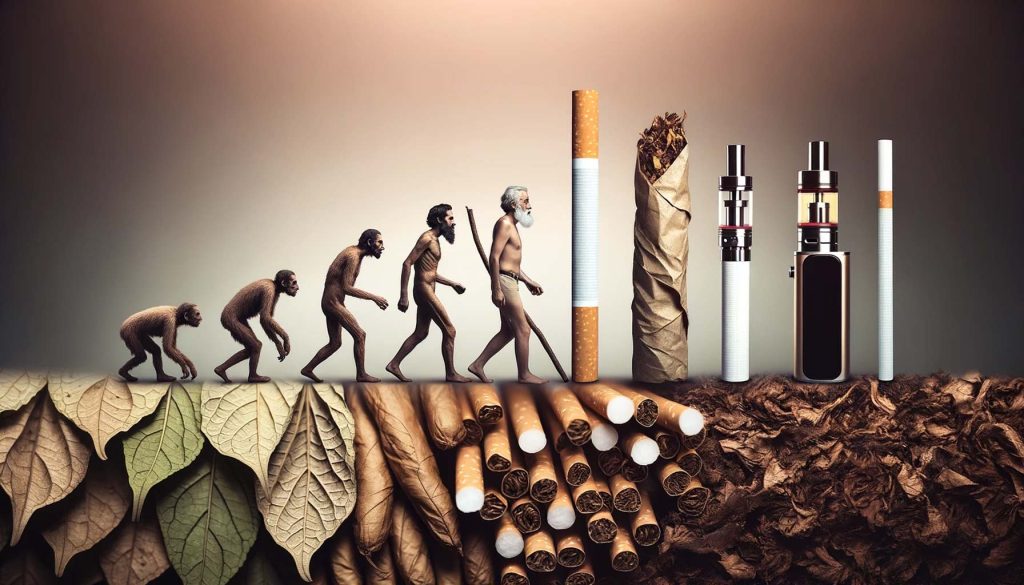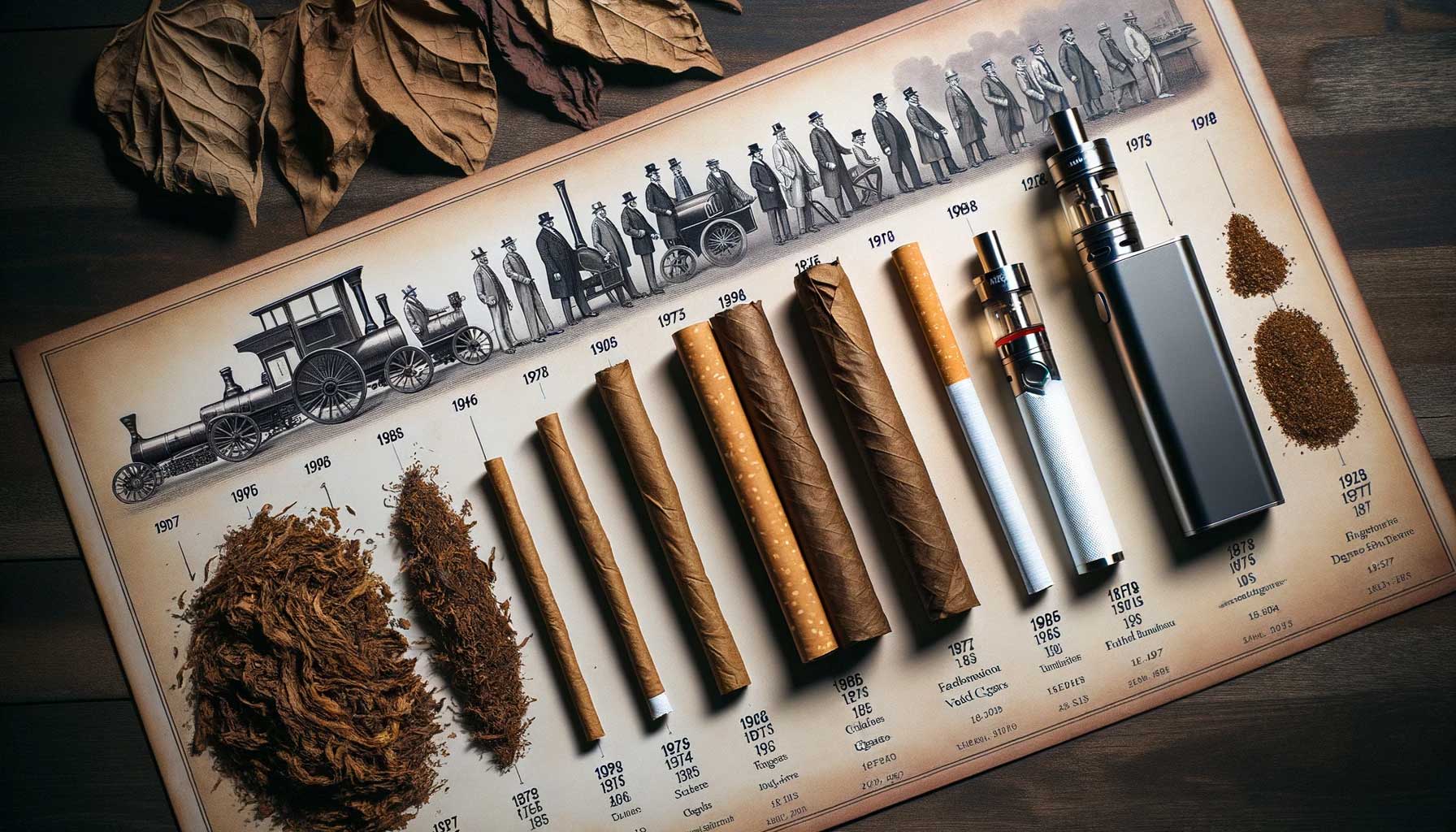Nicotine consumption has dramatically transformed over the past century, shifting from purely tobacco products like cigarettes to new technologically-enabled methods like vaping. This evolution continues today as emerging nicotine technologies aim to provide consumers with safer, cleaner alternatives to smoking.
The Rise of Traditional Tobacco
For centuries, tobacco was consumed by smoking cigarettes, cigars, pipes, hookah, and other combustible products. By the 1880s, mechanized cigarette production took off, and smokable tobacco use proliferated worldwide.
As of 2020, there were still over 1.1 billion tobacco smokers globally according to the WHO. Traditional combustible tobacco remains responsible for over 8 million deaths per year.

Health Impacts Catalyze Change
In the 1950s and 60s, scientific evidence confirmed the severe health hazards of cigarette smoking. This growing awareness of smoking’s links to lung cancer and heart disease fueled anti-tobacco campaigns.
By the 21st century, tobacco control policies reduced smoking rates in developed countries through regulations, taxes, and education. But the health impacts of smoking remain extremely high.
Introducing Nicotine Replacement Therapy
In efforts to help tobacco users quit, nicotine replacement therapy (NRT) products like gum, patches, inhalers, and lozenges were introduced as safer nicotine delivery methods.
NRT products gained FDA approval beginning in 1984, providing cigarette smokers an alternative source of nicotine without the hazardous chemicals produced by burning tobacco. However, long-term adherence to NRTs remains low.
The Advent of E-Cigarettes
In 2003, Chinese pharmacist Hon Lik invented the first commercially successful electronic cigarette (e-cigarette). Instead of burning tobacco, e-cigs use battery power to heat a liquid containing nicotine, flavors, and other chemicals to produce an aerosol inhaled by users.
E-cig popularity surged in the 2010s. By 2018, over 41 million adults were vaping worldwide according to Euromonitor International. Proponents touted e-cigs as a healthier alternative to cigarette addiction, while critics warned about long-term safety risks.
Health Impacts of Vaping
While e-cigs do contain fewer chemicals than traditional cigarettes, research on their health effects is still developing.
Some studies have found vaping may increase respiratory issues like coughing, wheezing, and asthma. But vaping is likely considerably less risky than smoking combustible tobacco according to Public Health England.
Regulating E-Cigarettes
Governments globally have scrambled to regulate the rapidly exploding e-cigarette market. As of 2020, over 30 countries banned e-cig sales completely.
In the US, the FDA began regulating vapes in 2016. Recently, the FDA has moved to prohibit all flavored e-cig cartridges besides menthol and tobacco amid youth vaping concerns.
The Rise of Nicotine Pouches
Smokeless, spit-free nicotine pouches have also grown popular as a discrete alternative to vaping. Placed between the lip and gum, these products contain nicotine and other ingredients but no tobacco.
Nicotine pouch sales are projected to reach $8.11 billion globally by 2028. Companies market them as a cleaner option than vaping or tobacco for obtaining a nicotine fix.
The Future of Nicotine Consumption
As smoking rates decline in many countries, the nicotine market continues shifting toward innovative alternatives like vapes, pouches, and other emerging technologies.
Heated tobacco devices that don’t burn cigarettes but instead heat tobacco to emit a nicotine vapor have also gained ground recently. Further advances in nicotine delivery systems are on the horizon.



Conclusion
While traditional combustible tobacco consumption has fallen dramatically, global demand for nicotine remains robust. As health concerns over smoking mounted over the decades, new technologies have transformed how nicotine is consumed – from NRTs to e-cigs to nicotine pouches. This evolution continues today as companies invest in ever-safer, more efficient nicotine delivery methods to reduce health hazards relative to traditional tobacco. But research still needs to catch up to determine the long-term population impacts of these new products.
FAQ’s
When did traditional tobacco consumption peak?
Traditional combustible tobacco smoking rates peaked around the 1960s in most developed countries before declining in the following decades due to growing health concerns.
How have nicotine replacement therapies like gum helped tobacco users?
By providing a cleaner delivery of nicotine without smoke, NRTs have enabled many cigarette smokers to manage nicotine cravings and withdrawal during the process of quitting smoking.
What fueled the rise in popularity of e-cigarettes?
E-cigs grew rapidly in popularity due to their ability to closely mimic smoking with an inhaled nicotine vapor, as well as through marketing promoting them as a safer alternative to tobacco.
Are e-cigarettes considered safe?
No, e-cigs do pose health risks and their long-term safety is still being researched. However, evidence suggests vaping is likely considerably less hazardous than smoking combustible tobacco products.
How are governments regulating e-cigarettes?
Regulations vary, but most restrict e-cig sales to minors, ban vaping indoors, and impose excise taxes on e-cig products. Many countries have outright banned e-cig sales as well.
What are some benefits being touted about nicotine pouches?
Nicotine pouches are promoted as a cleaner and more discreet method of consuming nicotine without any inhalation, smoke, or spit. Companies claim they satisfy nicotine cravings without major health risks.
Are heated tobacco devices a promising nicotine alternative?
Some evidence suggests heated tobacco may expose users to lower levels of toxic chemicals than cigarette smoke. But research on their health impacts is still ongoing.
What does the future look like for nicotine consumption?
As smoking declines, the market is shifting toward innovative smoke-free products for nicotine delivery that aim to be cleaner than combustible tobacco. Further technological advances in this area are expected.
Will nicotine consumption eventually become non-addictive?
Potentially in the long-term future, but nicotine is an addictive chemical, so completely non-addictive nicotine products are not feasible in the near future. However, new technologies may continue reducing nicotine’s harm potential.

